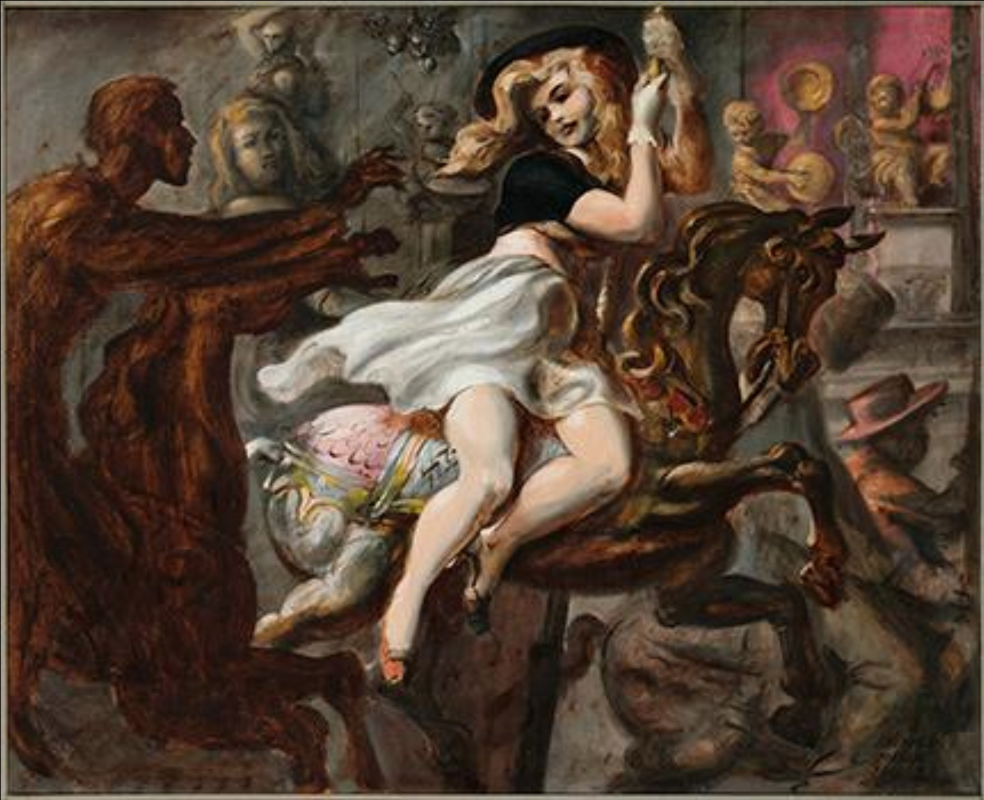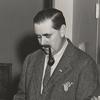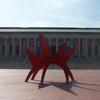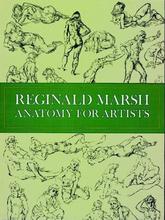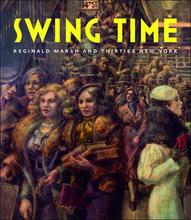More about Pursuit
- All
- Info
- Shop

Contributor
At first glance, Pursuit by Reginald Marsh is just your average day at the carnival.
A girl wearing a black hat, black top, and white dress rides the merry-go-round, enjoying the ride and taking the moment in. However, there’s a shadowy figure to the left reaching for her, and upon a closer look she’s practically wearing nothing else. Could’ve sworn I caught some underboob. Strangely enough, you can’t see the roof of the ride, and the lady’s horse is the only one with a pole. Suddenly this looks less like a ride at the amusement park and more like a burlesque show.
Marsh loved two things in the year the Japanese decided to bomb Pearl Harbor: Coney Island and burlesque. Pursuit contains elements of both, in order to study both the human body and human character in the places people went to escape the humdrum of daily life. Amongst the Regionalists, he was distinctly more interested in what amused the average American: theme parks, burlesque shows, and dance halls. Unlike most of the Regionalists, his chosen muse was the city of New York, as he chose to exemplify a distinctly American painting movement in America’s greatest city and his hometown as it saw immense social changes throughout the course of a World War. The Coney Island merry-go-round had a place in a prior work in 1936, featuring, in a rare occurrence, his wife and himself.
Interestingly, this year saw some changes to Coney Island. The amusement park just extended its boardwalk from Brighton Beach to Manhattan Beach. Additionally, Steeplechase’s Parachute Jump was introduced into the repertoire of rides Coney has to offer. The simulated parachute ride was 262 feet tall, had 12 chutes, and was imported from the 1939-1940 World’s Fair. From 1941-1942 Coney Island would remain open to boost morale amongst the general American populace. In the off-chance that enemy planes and submarines would reach American shores, the lighting around Coney Island was changed into blue or dark-purple lamps to reduce visibility. Unfortunately, it had the side effect of making Coney Island look dreary, depressing, and somber.
Sources
- “Reginald Marsh Paintings, Bio, Ideas.” n.d. The Art Story. Accessed March 31, 2019. https://www.theartstory.org/artist-marsh-reginald.htm.
- Stanton, Jeffery. 1997. “Coney Island.” Westland.net. Jeffery Stanton. 1997. https://www.westland.net/coneyisland/articles/1940.htm.
- Wigmore Fine Art, Inc., Deedee. n.d. “REGINALD MARSH (1898-1954): URBAN REALIST, MASTER OF MANY MEDIA.” D. Wigmore Fine Art, Inc. D. Wigmore Fine Art, Inc. Accessed March 31, 2019. https://www.dwigmore.com/marsh_essay.html.

